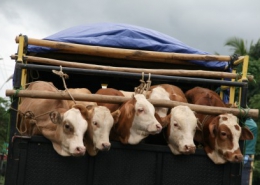A Case for Multilateral Investment in Avian Flu Prevention
Place: GMS • Dates: 2009 • Partner: FAO
Project Summary
Since the beginning of the new millennium, governments and international organizations have spent billions of dollars on various activities aimed at containing and controlling the emergence and spread of influenza viruses originating in domesticated animals. Much of this funding has been allocated to educational activities, subsidization and support of disease prevention efforts, and compensation to farmers for culled animals. While reducing the likelihood of a global pandemic is socially desirable, there has not been much macroeconomic quantification of the benefits of these expenditures. This policy brief provides some perspective on the expected benefits of these expenditures and their value relative to other social investments. Our analysis should be seen as indicative in nature because of uncertainties associated with severity of outbreaks, effectiveness of prevention and control measures, and overall expenditures. Despite this caveat, however, we believe there is a convincing and robust case for sustained and coordinated multilateral commitments to reduce global flu risk.
Most Recent Entries

California and China: Leadership for a Low Carbon Future

Roadmap on the Prospects for GMS National Scaling and GMS Regional Coordination of Agrifood Traceability Schemes









